How are looking for alien planets?
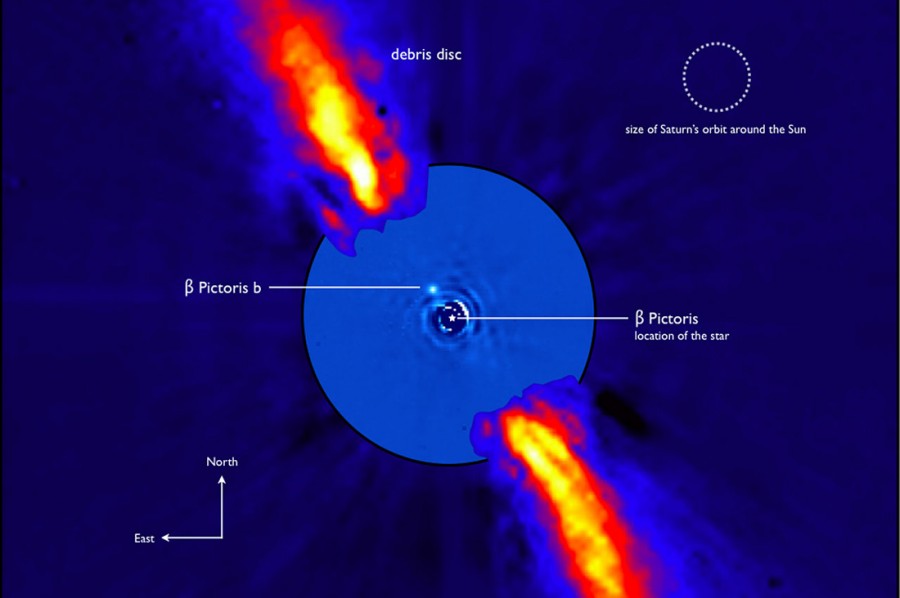
Arguing about flights to other stars, it should be understood that we don’t need the actual stars - we need to other planets, preferably earth-like and livable. And how to find out if the neighboring stars of the planet? It would seem simple: take a larger telescope, but look. If we can look at distant galaxies, then the closest stars should see both planets and satellites. But there is a “small” complexity: unlike the stars and galaxies, the planets practically do not shine themselves, but only reflect the light of their stars. The star illuminates its surroundings, so, despite the development of astronomical technology in the twentieth century, the first exoplanet - the planet from another star - was found less than thirty years ago.
Today, several methods have been developed and explored for searching exoplanets.
Direct observation
')
A sufficiently large telescope will be able to view a planet large enough and distant from its star. But for this you have to try and use special equipment. To get rid of the bright light of a star, a coronagraph is used to search for planets - an opaque disc in the telescope's optical scheme, which allows you to block the light of a bright source. In combination with adaptive optics, this system allows us to consider large and distant planets from neighboring stars. The best way is to find “young Jupiters” in the infrared range because they have high thermal radiation since formation.
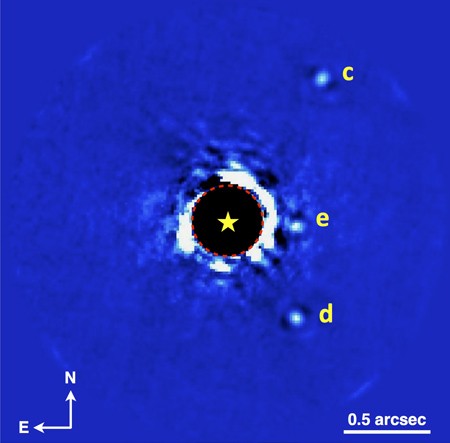
Several coronagraphs were installed on 8-meter telescopes of the Gemini Observatory and VLT, which provide high resolution. And today we were able to consider only a few alien systems. Sometimes the system is so young that the planets are not yet visible, but a protoplanetary disk is clearly distinguishable, as for example in HR 4796, at a distance of 230 St. years from us.

The star Beta Painter could even trace the orbital motion of the planet in two years.

The Hubble Space Telescope also managed to view the planet as a result of many years of observation of a dust disk around the Fomalgout star.
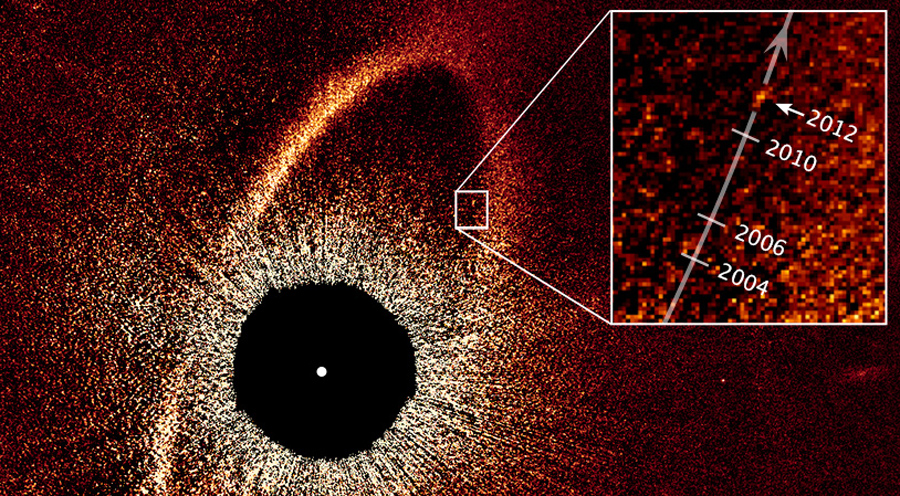
In the coming years, the number of exoplanets found and examined by direct methods will only grow, but so far single bodies are being discovered and investigated. NASA is leading the Exo-S Space Observatory project, which consists of a separate telescope and a coronagraph. But the estimated launch date has not yet been named.

Transit method
This indirect method allows to determine the number of planets, their sizes, orbital period and orbit parameters. In some cases, it is even possible to get a rough idea of the composition of the atmosphere. At present, this method holds the record for the number of discovered planets, primarily because it allows telescopes to work on areas, rather than focus on one goal.
The principle of the transit method is photometry. During the observation, the intensity of the glow of the star is recorded. If a planet passes between us and the star, then the brightness of the star falls, and this moment is recorded on the brightness graph.
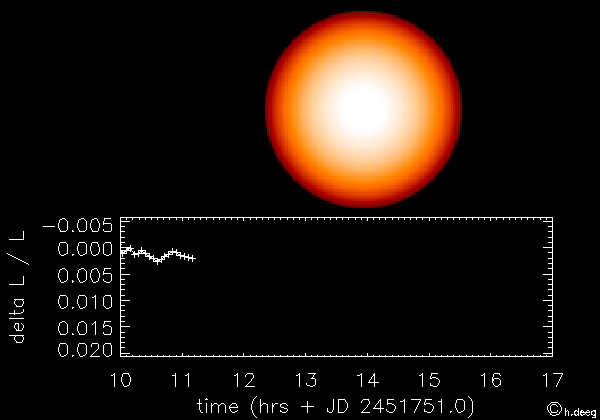
If the dips of brightness occur regularly, and are always equal, then we can assume that such an effect is caused by the planet.
Not only the planet can cause fluctuations in the brightness of a star, it can be internal cycles or a companion star. Therefore, the transit method requires confirmation by an independent method. Now there are several thousand transit candidates who are gradually confirming or disproving.
Despite the success of this method, its drawbacks are obvious:
First, the planet must be lucky with an orbit lying on the line of our sight from Earth. For example, Venus flies around the Sun every 7.5 months, flying between us and it, but the nearest transit will be in 2117. Mercury flies more often, the nearest transit is waiting for May 9th .
Secondly, as we see, the transit method works better for planets close to a star, especially large ones. It was the transit method that gave rise to the mass of discoveries of the so-called. "Hot Jupiter" - close to their stars of the giant planets. It is curious that these discoveries disproved the previously existing theory of the formation of planetary systems, which explained the distribution of the stone and gas planets in the solar system.
Thirdly, the search for land-like exoplanets requires a long observation time, since it is not enough to detect a single transit, it is necessary to obtain statistics: at least three transits. Those. to detect, for example, the Earth by the transit method, aliens have to look at the Sun "without blinking." for three years.
Long continuous observations of a large number of stars became possible with the development of astronautics, and the launch of the Kepler space telescope. To increase its effectiveness, it was sent to a star cluster in the constellation Cygnus. This allowed us to make many discoveries, but, unfortunately, all these planets at a distance of 2-3 thousand sv. years, so physically getting to them, or at least consider, we can only dream.
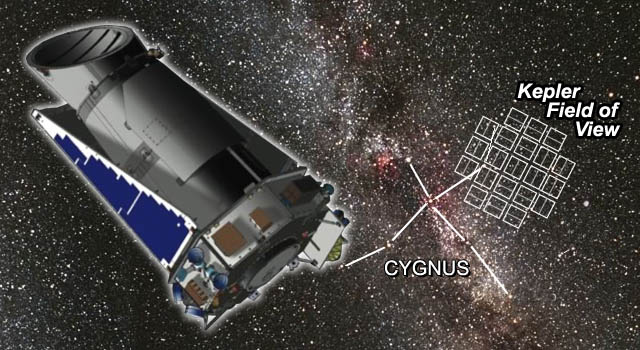
Kepler worked steadily for 4 years, until two of the four engine flywheels failed, which allowed him to maintain orientation. And you need at least three, for aiming on three axes, so now it works in a very limited mode using two flywheels and the pressure of sunlight as the third. Its efficiency has fallen by 95%, but all the statistics of observation have accumulated so much that we will hear for a long time about the discoveries made with its help.
NASA supported the project of the MIT institute of the next telescope for the transit search of planets within 100 sv. years around the sun. TESS flight is expected in 2017. It seems that its results will attract much more public attention, because the planets will be discovered "very close".
Radial Velocity Method (Doppler Shift)
My favorite method is due to the phenomenal accuracy that it provides and the elegant simplicity of the physical principle that underlies it.
But first, a little about the theory of spectroscopy. I hope everyone knows what a rainbow is and how it is formed. A rainbow is the spectrum of the Sun, obtained naturally. The chemical composition of the star is concealed in the radiation spectrum, since each chemical element, being heated, glows with its own color.

The luminescence is recorded by a spectrometer and, by determining the different lines of the spectrum, it is possible to determine the composition of the radiating object. If the light passes through the planet's atmosphere or is reflected from the surface, then part of the light is absorbed, and dips are formed in the spectrum, indicating chemical elements that have absorbed the light.
Another physical phenomenon necessary for understanding the radial velocity method is red and blue displacement.

When the star under study moves away from us, the wavelength of the emitted light is stretched, due to which the entire spectrum shifts to the red. If the element is removed and emits red light, then we register it already in the infrared range, if it is green, then in yellow, if it is blue, then in green, etc.
Blue offset is the reverse process. If the star rushes towards us, then its spectrum is "blue" - shifted to the blue and ultra-violet side.
How does this relate to the presence of planets in distant stars? Patience. It is necessary to take into account another property - the movement of two bodies at one center of mass.
We all know that the earth revolves around the sun. It seems to be true, but not quite. In fact, the Sun and the Earth revolve around a single center of mass, which does not correspond to the center of the Sun. The Earth has a similar effect with the Moon, while Pluto and Charon have a center of mass outside Pluto, so they both rotate around a conditional point between them.
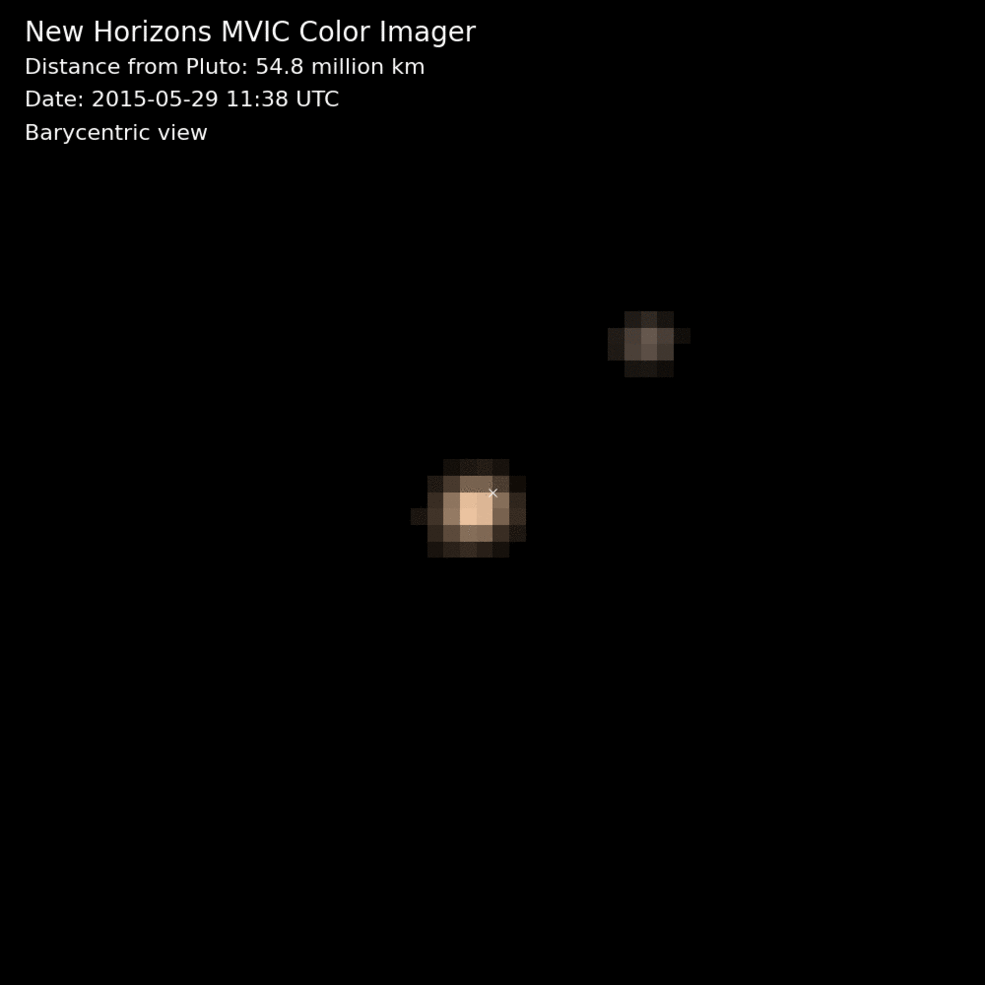
Of course, the negligibly small mass of the Earth leads to a completely insignificant oscillation of the Sun - within 50 km, but Jupiter is already weakly sausages the Sun, forcing it to deviate by 750 thousand km. Those. Jupiter and the Sun as well as Pluto and Charon rotate around a point in space.
And now we reduce everything to a single search method: an exoplanet, rotating around its star, forces it to rotate with a deviation from its center of mass. Accordingly, with respect to the external observer, the star will move away, then approach, which will lead to either red or blue shift of the spectrum. We can take a fairly sensitive spectrometer, and we can see how the spectrum of the star periodically turns red and blue, in full accordance with the orbital dynamics of the planet.

And, finally, on the accuracy of the method: the HARPS spectrograph on the 3.6-meter La Silla telescope of the European Southern Observatory allows you to track the movement of a star at a speed of up to 1 meter (!) Per second. Such a method allows to find Earth-like planets at a distance of up to 150 years from us, and “Jupiters” up to several thousand light years. As a rule, it is the Doppler shift method that is used to recheck the candidates of planets obtained by the transit method.
Unfortunately, the method works pointwise, and requires multiple observations of each object, so it does not have time to keep up with Kepler, and does not have time to inspect the nearby stars. However, HARPS recently worked in the search for an earth-like planet near the star Proxima Centauri near us, as part of the Pale Red Dot project. The results have not yet been published, but the expectations are very encouraging.
In general, these two methods: transit and Doppler shift, are almost the basis of all searches:
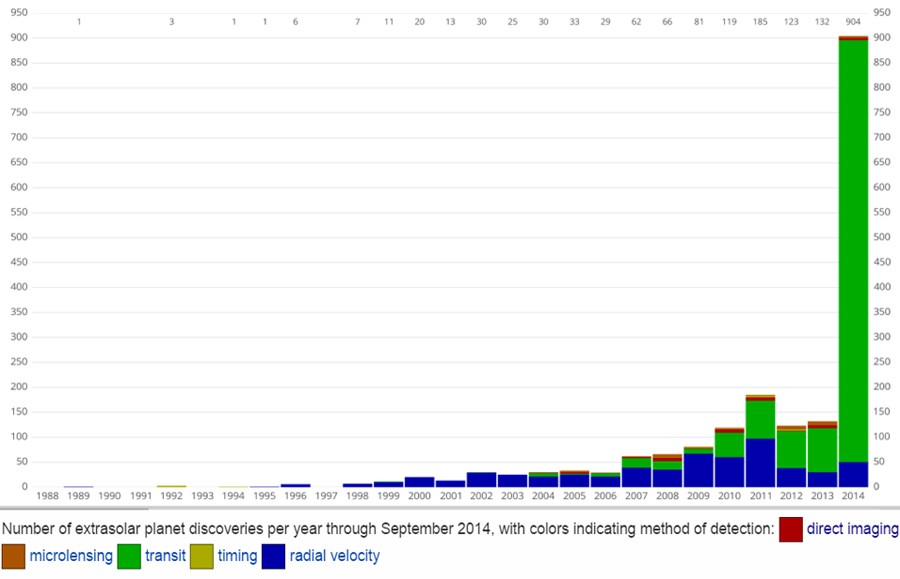
Let's go over some more original methods that, with some reservations, but work.
Changing the orbital phase of the reflected light
The method is similar to the transit one, only it registers not an increase in brightness, but an increase. The effect occurs when the planet at the star is in the quarter phase, and part of the incident light reflects in our direction. It's like the brilliance of evening / morning Venus, plus the brightness of the sun. The effect depends on the size of the exoplanet, its proximity to the star, and the brightness of the reflected light. The method is rough, but does not require finding the planet's orbit on the line of our sight.
Astrometric method
Similar to the Doppler shift method, requires long-term observations, but does not require spectrometers. During the observation, the position of the star is carefully recorded relative to neighboring objects, and if wavy deviations are observed, this indicates a fairly massive companion, forcing the star to rotate around a common center of mass. It is clear that the star must be small, and its planet is massive, therefore, so often you can find double stars and brown dwarfs-companions.
Unique astrometric data for decades of observations accumulated in the Pulkovo Observatory near St. Petersburg. Now the observatory is experiencing hard times due to the growing metropolis and illuminated sky.
Gravity microlensing method
The original method, based on the effects of deflection of a ray of light by the gravitational field of massive objects. The effect of a gravitational lens arises if exactly two bright and rather massive bodies appear on the line of our sight. For example, the star of our galaxy passes between us and another distant star or galaxy. Gravity of a nearby star affects the light of a distant object, deflecting it, and forming the effect of a "lens". If the gravitational field of a star is deformed by the gravity of exoplanets in its system, then the “lens” will turn out to be “defective” - with violations.

The development of this method is the search for the effects of lensing, which are caused by invisible planets, even wandering around the galaxy without their own stars.
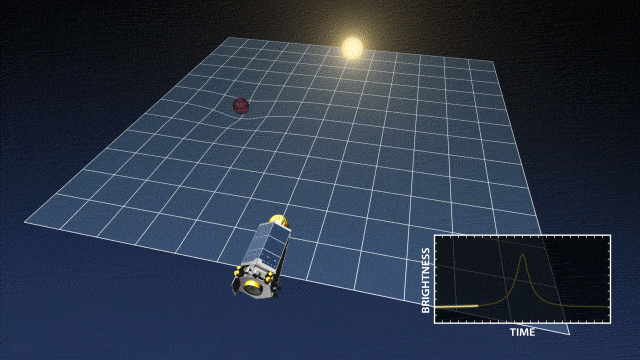
A similar search began recently Kepler redirected to the center of the Milky Way galaxy. During this maneuver, the connection with the telescope was lost, but it has already been restored, and now we are waiting for new data from the telescope on the prospects of the method.

In the near future, earthlings will learn much more about their surroundings. The launch of the James Webb space observatory and the construction of the European Extreme Telescope, the emergence of more responsive HARPS spectrographs, and the results of the astrometric “Galaxy Census” by the Gaia Observatory , will allow a much better understanding of the structure and origin of the nearest and remote star systems, and find out if we have a chance to find a “spare Earth”, alien life, or even intelligent inhabitants of exoplanets.
Source: https://habr.com/ru/post/393417/
All Articles